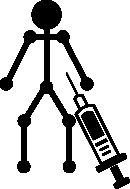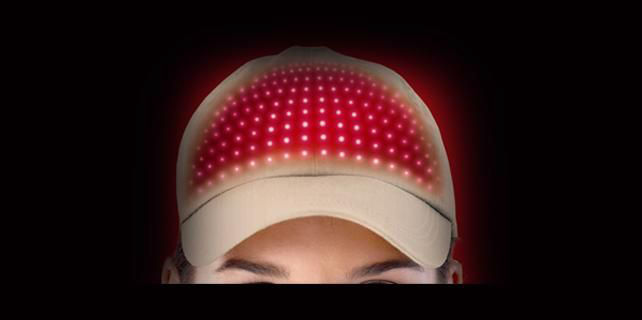At least 50% of all adult men will suffer with some form of male pattern hair loss. This increases to 73% of all men and 57% of all women over the age of 80. At Rejuvence Clinic we specialise in the treatment of hairloss. We are experts in the various types of treatments available for hair loss and best placed to advise our clients on what works and what doesn’t. Most importantly we adopt an evidence based approach. This means we examine all the available published scientific and medical evidence that exists for a specific treatment and only offer treatments that have been proven to work. No magic potions and wild claims.
Low Level Laser Therapy, otherwise known as LLLT, is one of three recognised FDA approved treatment regimens for androgenetic alopecia in males and females. The FDA is known as the United States Food and Drug Administration and is a federal agency responsible for the protecting the public health. The FDA approved the LLLT laser comb for use in males for androgenetic alopecia in 2007 and subsequently approved its use in women in 2011.
As with other FDA approved hair loss treatments – minoxidil and finasteride – the positive effects of LLLT for hair loss were stumbled upon by chance. In the late 1960s a Hungarian physician by the name of Endre Mester, conducted a series of experiments to evaluate the potential cancer causing effects of red ruby laser on mice. As a result he shaved mice and shone this laser (694nm) on them. To his surprise he found that rather than have any negative carcinogenic effects the red laser actually resulted in accelerated regrowth of the mice’s fur. Animal studies using a ‘Laser Hair Comb’ employing red LED and laser of 650nm frequency, demonstrated increased hair growth. Dr Shukla and his team, in 2010, developed an animal model using Swiss albino mice and demonstrated positive effects of low energy LLLT (1J/cm2 ). However, he also demonstrated negative inhibitory effects of LLLT on hair growth if a high energy alternative (5J/cm2 ) was used. Hency too high an energy beam and/or if exposed to LLLT for too long or too often, can cause increased hair loss as opposed to increased hair growth. Animal models of chemotherapy induced hair loss have also provided encouraging signs of LLLT, helping this form of alopecia as well.
LLLT is a photo-biostimulator and can result in improved hair growth in various forms of hair loss, specifically androgenetic alopecia – male and female pattern hair loss. In the context of androgenetic alopecia, low level laser therapy aids in the transformation of vellus and miniaturised hairs into longer terminal hairs. LLLT improves hair growth in the following ways:
- LLLT stimulates hair follicles to re-enter the anagen (growth) phase from telogen (resting) phase within the hair cycle
- LLLT prolongs the anagen (growth) phase of the hair cycle.
- LLLT increases the rate of proliferation and growth during the anagen phase of the hair cycle.
- LLLT also results in increased blood flow to exposed areas of the scalp through vasodilatation (swelling of arteries) which also helps to stave off the ischaemic effects of dihydrotestosterone (main hormone responsible for male pattern hair loss).
For a specific treatment to gain credibility and to be accepted as having a positive effect, researchers are required to provide clinical evidence of its beneficial effects. This is done through the publishing of the results of clinical trials and these clinical trials are categorised and assessed according to how well they have been carried out and the statistical strength of their results. At Rejuvence Clinic we take great pride in appraising this evidence in order to provide our clients with the best possible treatment options.
![]() With the success of LLLT in numerous animal models, numerous researchers have carried out a number of clinical trials and managed to demonstrate the effectiveness of LLLT for androgenetic alopecia. As early as 2003, Satino et al. published the findings of his LLLT research in the International Journal of Surgical and Aesthetic Dermatology. He treated 28 males and 7 females with androgenetic alopecia, with a laser comb on alternate days for 5-10 minutes a day for a period of 6 months. They identified significant increases in hair density at 6 months over the vertex and temples. Kim et al. published the findings of their research in the Journal of the American Academy of Dermatology in 2007. They treated 24 males suffering with androgenetic alopecia and exposed their scalps to 655nm red light once a day for 14 minutes and identified, on average, a significantly increased hair density at 14 weeks.
With the success of LLLT in numerous animal models, numerous researchers have carried out a number of clinical trials and managed to demonstrate the effectiveness of LLLT for androgenetic alopecia. As early as 2003, Satino et al. published the findings of his LLLT research in the International Journal of Surgical and Aesthetic Dermatology. He treated 28 males and 7 females with androgenetic alopecia, with a laser comb on alternate days for 5-10 minutes a day for a period of 6 months. They identified significant increases in hair density at 6 months over the vertex and temples. Kim et al. published the findings of their research in the Journal of the American Academy of Dermatology in 2007. They treated 24 males suffering with androgenetic alopecia and exposed their scalps to 655nm red light once a day for 14 minutes and identified, on average, a significantly increased hair density at 14 weeks.
Larger scale and more robust blinded randomised controlled trials have been published in the last 5-7 years. In 2009, Leavitt et al. conducted a 26 week trial, consisting of 110 patients suffering with androgenetic alopecia. The patients were split into two groups and the effects of laser comb were compared with an identical ‘sham’ device. Patients and investigators were not made aware of which device was genuine. Patients used the devices 3 times a week for 15 minutes and at 6 months. There was subjective and objective evidence of improved hair density and growth with the LLLT device.
In 2014, Jimenez et al published the results of a large multi-centre (Cleveland, Minnesota, Miami and Lynchburg) randomised controlled trial, consisting of 120 females and 99 males suffering with androgenetic alopecia. They completed treatment lasting 26 weeks and were split into 4 groups using 5 types of laser hair comb configurations with a variety of numbers of beams. Each group demonstrated a significant increase in terminal hair density following use for 6 months. The efficacy of LLLT was also shown to not be affected by age or sex and that the results of LLLT were indeed favourably comparable to the effects of other FDA approved treatments for hair loss, namely minoxidil and finasteride.
In 2013, Lanzafame et al. published the results of a trial he conducted using a helmet device that consisted of a larger number of red light sources than the pre-existent laser hair comb. This helmet had 21 lasers and 30 LEDs of 655nm +/- 5nm frequency. It was used on alternate days for 15mins and at 16 weeks of use, measurements demonstrated upwards of 35% increased hair growth in certain areas of the scalp. However, this was not always immediately noticed by the patient themselves.
Finally, in February 2017, Dr Areej Adil and Dr Marshall Godwin, published the results of a systematic review and meta-analysis of the effectiveness of treatments for androgenetic alopecia in the Journal of the American Academy of Dermatology. In this review they compared the effects of minoxidil to finasteride to LLLT and pooled the results of 23 previous studies that have been published. Their meta-analysis pooled the results of studies conducted by Leavitt et al (2009), Lanzafame et al. (2013) and Kim et al. (2013) and demonstrated that LLLT is an effective treatment for androgenetic alopecia.
![]() Low Level Laser Therapy (LLLT) definitely works in the treatments of androgenetic alopecia in males and females. It has been shown to be as effective as minoxidil and finasteride. It is likely also to have a positive effect in other forms of hair loss with particular interest in chemotherapy induced alopecia and alopecia areata. Future research is looking at the effects of LLLT in combination with minoxidil and finasteride as well as the effects of LLLT in the prevention of shock hair loss following hair transplantation. Indeed preliminary results from a study published by Dr Samia Esmat and her group (April 2017), based in Egypt, compared the effects of minoxidil and LLLT on their own as well as when combined in patients suffering with androgenetic alopecia. Their study consisted of 45 patients split into 3 groups (minoxidil, LLLT, minoxidil + LLLT) and they demonstrated improved results in the combination group.
Low Level Laser Therapy (LLLT) definitely works in the treatments of androgenetic alopecia in males and females. It has been shown to be as effective as minoxidil and finasteride. It is likely also to have a positive effect in other forms of hair loss with particular interest in chemotherapy induced alopecia and alopecia areata. Future research is looking at the effects of LLLT in combination with minoxidil and finasteride as well as the effects of LLLT in the prevention of shock hair loss following hair transplantation. Indeed preliminary results from a study published by Dr Samia Esmat and her group (April 2017), based in Egypt, compared the effects of minoxidil and LLLT on their own as well as when combined in patients suffering with androgenetic alopecia. Their study consisted of 45 patients split into 3 groups (minoxidil, LLLT, minoxidil + LLLT) and they demonstrated improved results in the combination group.
At Rejuvence Clinic we are keen to stamp out all myths about hair loss and its treatment. We know how psychologically debilitating hair loss can be for men and women. We also recognise that the treatment of hair loss is hard and requires patience and belief. We believe in providing our clients with treatments that really do work and always strive to instill our clients with confidence as well as realistic expectations.
Low Level Laser Therapy really does work. At Rejuvence Clinic we are in the process of bringing out a range of LLLT options for our clients so watch this space. For all your hair loss needs please visit our website and book a free consultation with us at: https://www.RejuvenceClinic.co.uk.

